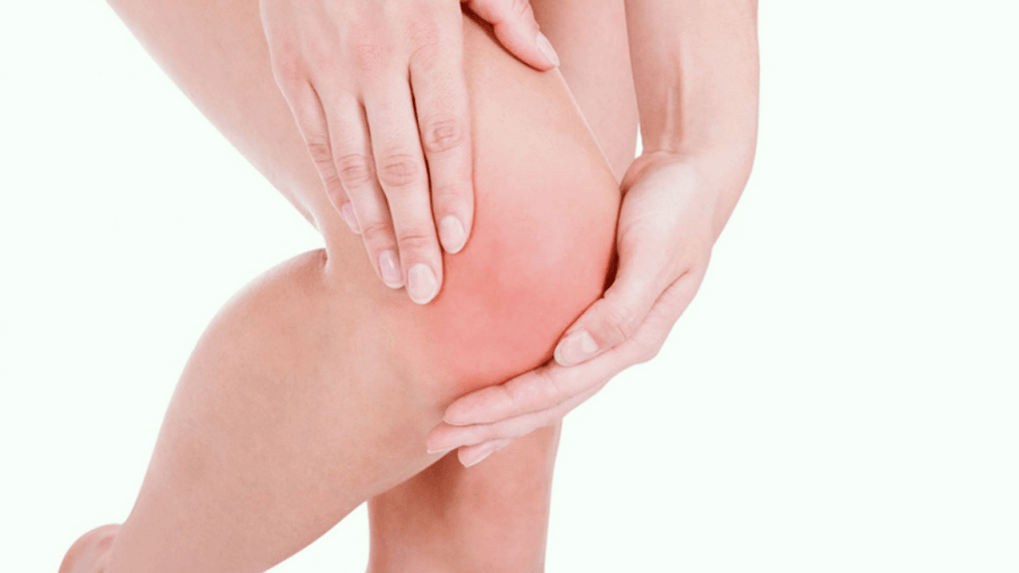With age, the cartilage tissue of different joints gradually deteriorates, which is accompanied by the destruction of both the joint capsule itself and the elements around it. The osteoarthritis of the knee joint (also gonarthrosis) is called the degeneration of the cartilage of the knee.Initially, the disease is accompanied by pain, which can later lead to a significant restriction on movement and even damage.
The osteoarthritis of the knee joint (also gonarthrosis) is called the degeneration of the cartilage of the knee.Initially, the disease is accompanied by pain, which can later lead to a significant restriction on movement and even damage.
Symptoms of knee arthrosis
The main symptom of arthrosis is rare, regular or endless knee pain.The most common symptoms are:
- Pain when changing position, moving up the stairs;
- resting pain;
- Knee stiffness after sleep - first for a short time, then up to 30 minutes;
- crunching, sharp sound accompanied by pain;
- Problems with the movement of the knee joint, rarely - inability to bend the knee;
- visual deformation of the knee joint;
- swelling of nearby skin;
- The lame (a characteristic symptom of an advanced stage).
4 degrees of pathology
The manifestation of the symptoms largely depends on the stage of development of the disease.For example, during the first stage, the patient may not experience pain, but in pathology at stage 4 the pain is pronounced and movements are very difficult.The development of the pathology is divided into 4 degrees:
- The first is that there are no symptoms like such, but during an X -ray, the doctor may detect minor abnormalities from the normal condition.
- The second is episodic pain, observed mainly during physical activity, while changing position, squatting or moving up the stairs.
- Third, the pain is intense and appears constantly, even at rest.In this case, walking is only possible with the use of a cane.The X -ray reveals a significant narrowing of the joint space, the degeneration of the meniscus and the spread of bone tissue.
- Fourth, knee movements are difficult or even impossible.X -rays show complete destruction of cartilage tissue, sometimes the bones begin to merge together.
Important!Even if you experience accidental knee pain, you should consult a doctor and get an X -ray.If the disease is detected early, the chances of recovery are much more.
Diagnosis of Disease: Where to Go
For diagnosis, the patient turns to the therapist, after which he goes to see an orthopedist, rheumatologist, vertebologist or kinesiotherapist (depending on the direction).Diagnosis includes an interview, examination of the patient and performing a number of procedures:
- General analysis of blood and urine;
- X -ray;
- Computed tomography;
- MRI;
- Ultrasound for examination of the joint capsule of the knee, as well as adjacent structures - muscle tissue, tendons;
- Joint puncture (collection of fluid for analysis);
- Arthroscopy (placing a small camera in the joint for accurate diagnosis).
Treatment of knee arthrosis joint
The course of treatment is prescribed by a doctor.If the disease is not advanced, conservative therapy (without surgery) may be used.In this case, medicines and physiotherapy procedures are indicated.As a rule, treatment is complicated - the patient will use medicines from different groups:
- Non-steroidal anti-inflammatory drugs to relieve pain-diclofenac, ibuprofen and medicines based on them;
- Hormonal drugs (corticosteroid group) - they are used in the case of ineffectiveness of other medicines;
- Antispasmodics - "tolperisone" and its analogs;
- Chondroprotectors - medicines that stimulate the process of cartilage repair: "chondroitin sulfate", "glucosamine" in combination and separately;
- Medicines that stimulate blood saturation with oxygen, nutrients and improve blood flow ("pentoxifill", "nicotinic acid" and others).
Medicines are used in various forms - externally (ointments, gels), oral (tablets), intramuscularly and intraarticular (injections).Along with the medication, if necessary, the doctor may prescribe the following procedures:
- shock therapy;
- magnetic therapy;
- laser therapy;
- electrotherapy;
- phonophoresis;
- Ozone therapy.
In extreme cases, when the use of medicines and procedures for a long time does not give the desired effect, and also if the disease is highly advanced, treatment is only possible through surgery.Several types of operations are possible:
- Osteotomy - the surgeon cuts one bone, changes its angle to reduce the overall load of the knee joint;
- Arthrodesis - in this case the doctor attaches the bones together, which eliminates mobility and reduces the pain, resulting in the person can lean on his feet;
- Endoprothic - a general replacement of the affected joint with a prosthesis.



















